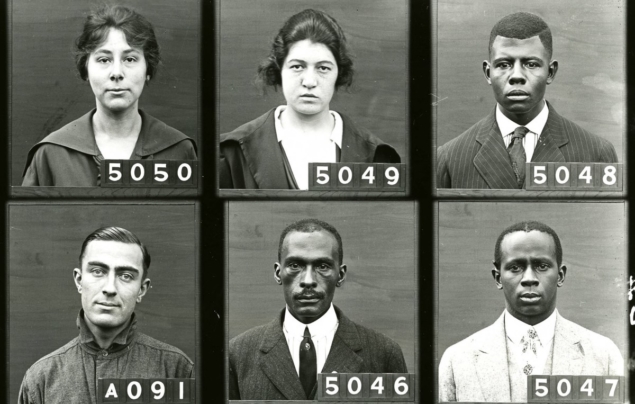
The US National Institute of Standards and Technology has been around for over a century and in 1918 the metrology institute first started to photograph its employees for security concerns related to the First World War.
NIST librarian and archivist Keith Martin has been looking into the lives of some of the people photographed and describes some of the most interesting characters in this lovely article.
One of the photos is of a young Frank Davenport Calmore, who was a clerk in the NIST instrument shops while attending the Howard University School of Law – a historically Black university in Washington DC. Despite earning his law degree, he spent decades working as a train steward in Texas. Although denied a legal career, he used his legal training on several occasions to advocate for fair employment for Black Americans in the railroad industry.
Elizabeth Yung-Kwai is one of the earliest known Asian-American employees at NIST, which was founded as the National Bureau of Standards in 1901. A student at Wellesley College, she researched self-luminous materials and co-authored the paper “Studies of radium luminous materials,” which was presented at the April 1919 meeting of the American Physical Society. After raising a family she served her country again in the Second World War as a member of the Women’s Army Corps.
Cleon Throckmorton was a lab assistant at NIST while studying at George Washington University. A year after his photo was taken, he opened the Krazy Kat Klub in Washington DC, which catered to a gay clientele. He later moved north to New York City where he became a successful set designer for theatre and television.
But perhaps the most interesting find by Martin is a poem written by the chemist Campbell Waters about how to avoid contracting influenza. It was recorded for posterity by office clerk Lois Crump, who send it to her husband overseas. It begins “Oh, shun the common drinking cup, void the kiss and hug…”. Words that resonate today.
Quasicrystal quest
For more than a decade Luca Bindi and Paul Steinhardt have been on a quest to discover quasicrystals. The duo went on an expedition to the wilds of the Kamchatka Peninsula in the far east of Russia to successfully show that quasicrystals can occur in nature – they had previously only been synthesized in the lab.
Now, the duo and colleagues have found a previously unknown icosahedral quasicrystal in a sample of red trinitite. This material was formed during the Trinity test – the first detonation of a nuclear bomb, which occurred in New Mexico in July 1945.
Trinitite was created when the intense heat of the bomb fused sand with copper wiring from recording equipment. The team used several techniques to study the structure and composition of metallic blobs within a trinitite sample and found a structure with fivefold, threefold, and twofold rotational symmetries. This pattern violates the symmetry rules of periodic crystals and is therefore a quasicrystal.
The quasicrystal that Bindi and Steinhardt found in Kamchatka probably fell to Earth in a meteorite. This latest work suggests that quasicrystals could be forming in violent events here on Earth, including lightning strikes, meteor impacts, or other nuclear detonations.
- Paul Steinhardt has written a highly entertaining book about his quest for quasicrystals. You can read my review here.








